
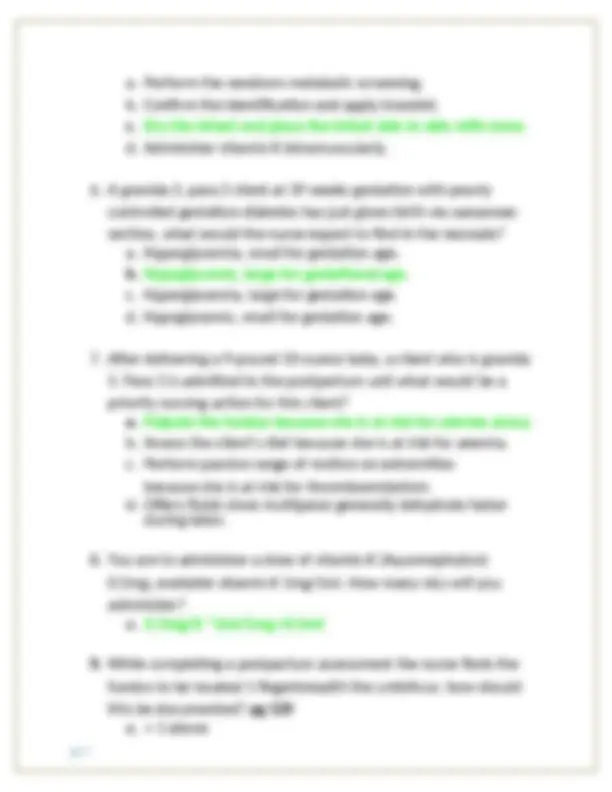
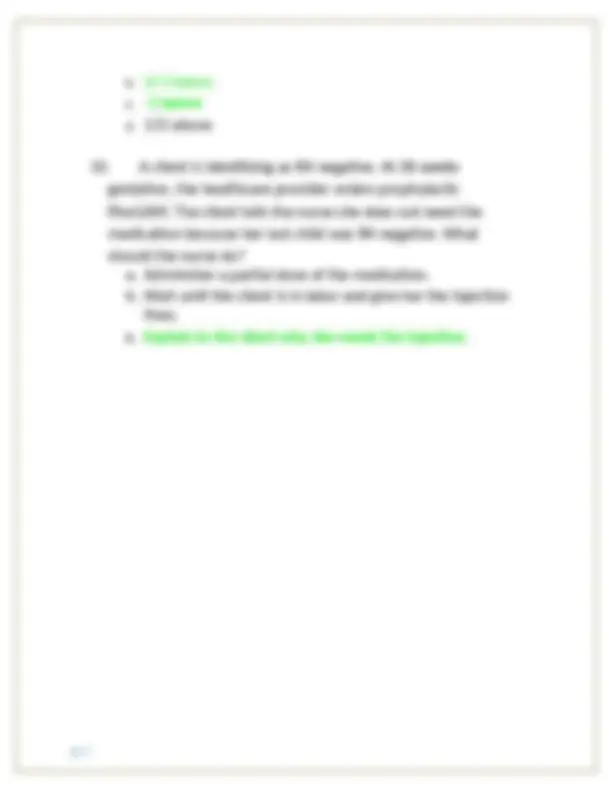
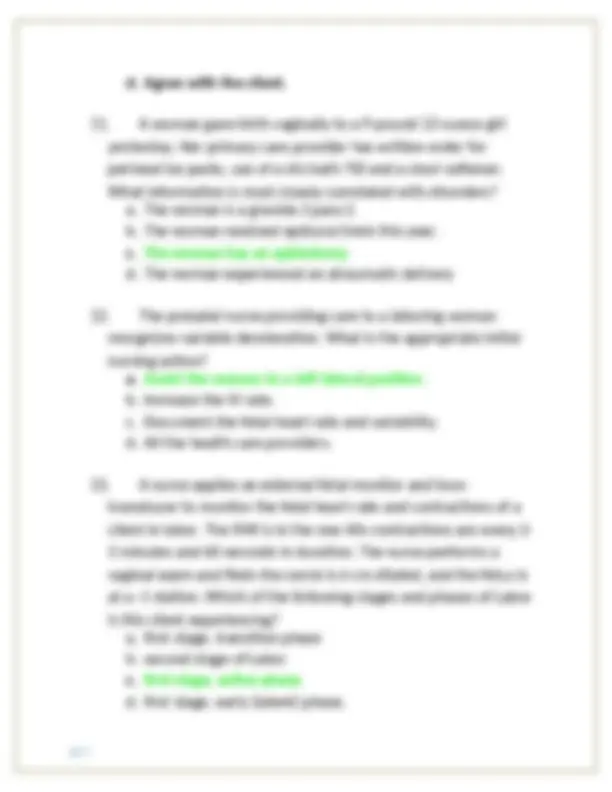
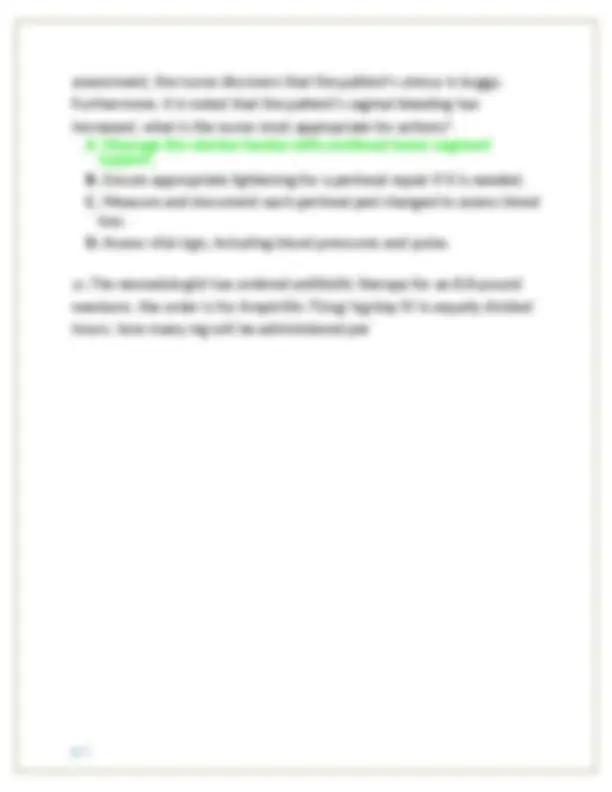
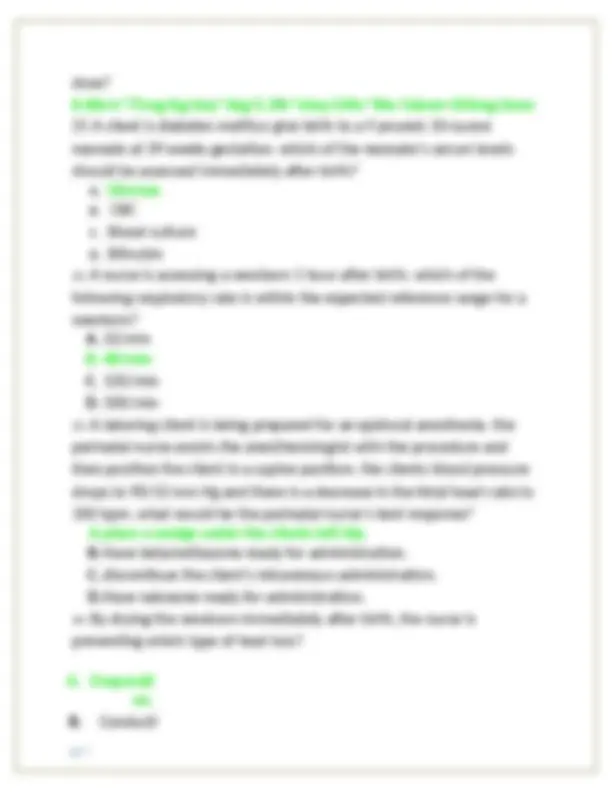
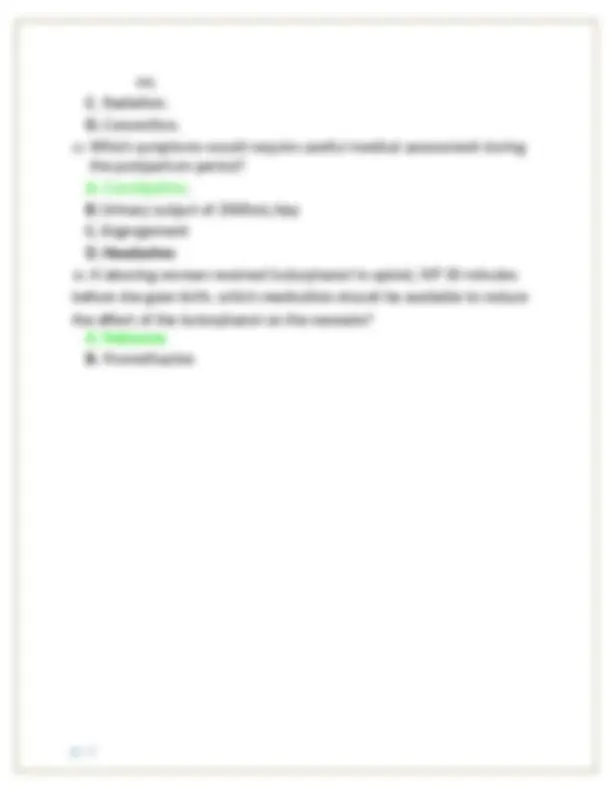
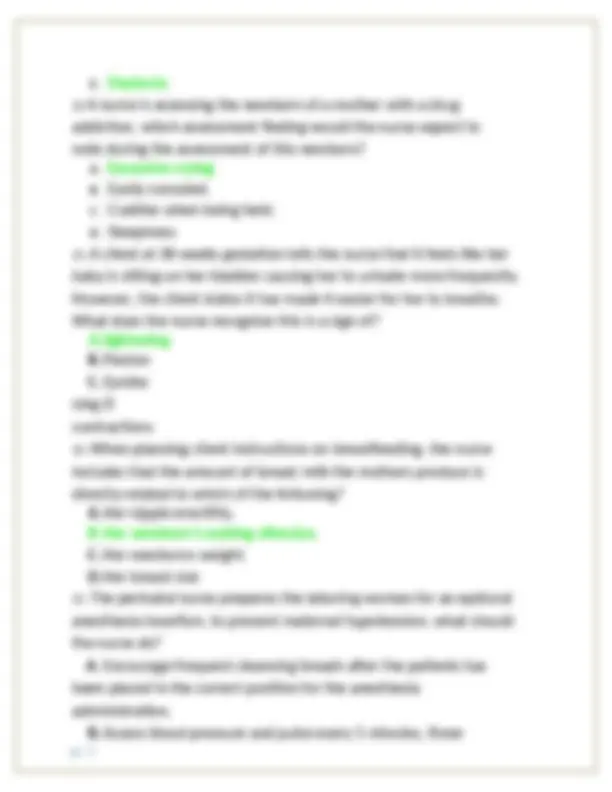
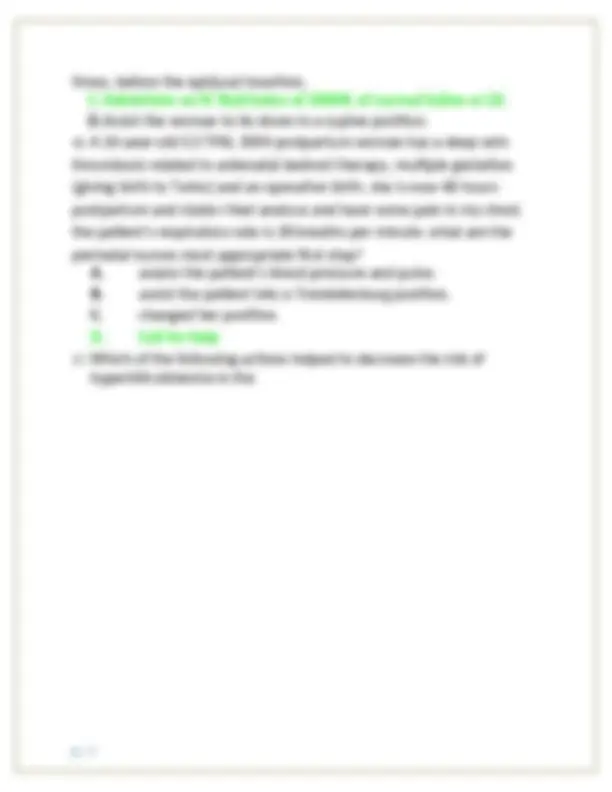
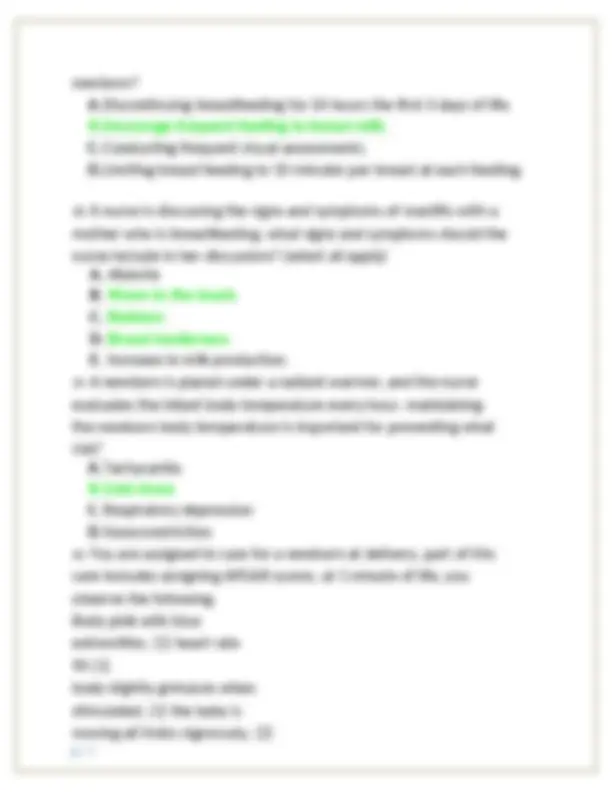
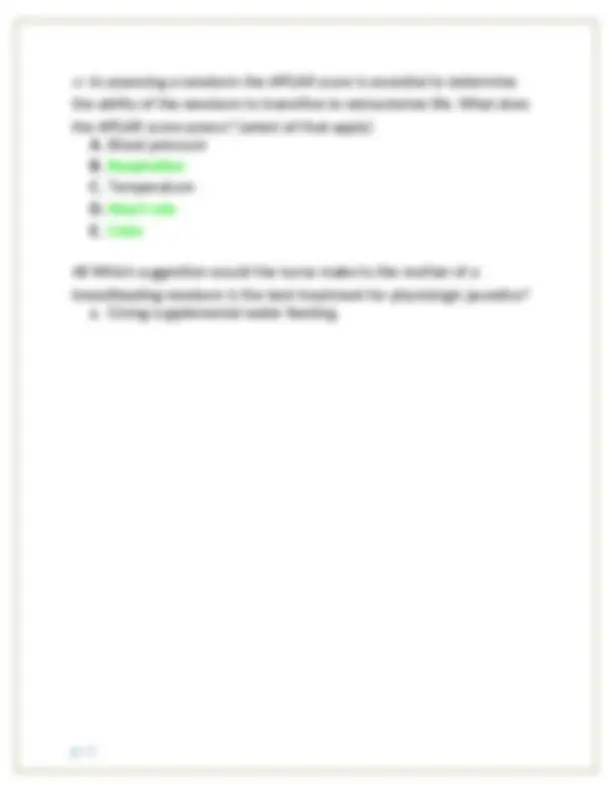
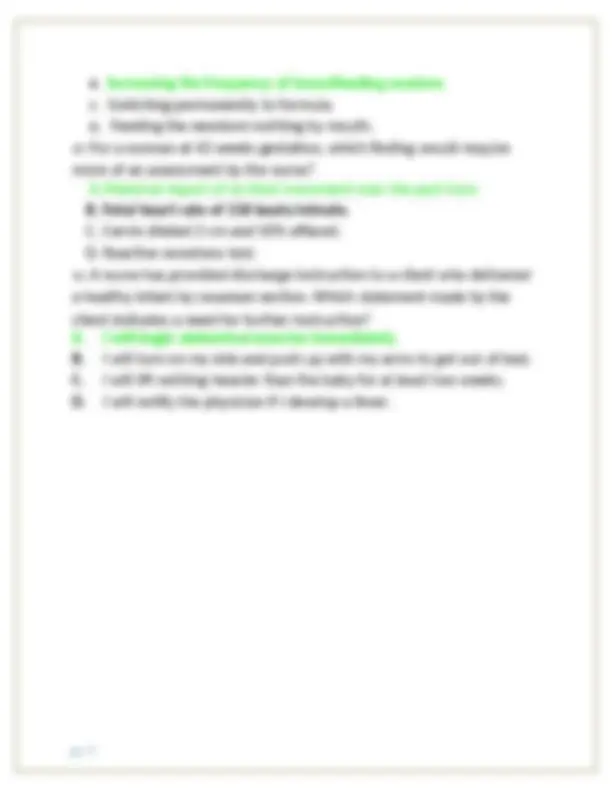


Study with the several resources on Docsity

Earn points by helping other students or get them with a premium plan


Prepare for your exams
Study with the several resources on Docsity

Earn points to download
Earn points by helping other students or get them with a premium plan
Community
Ask the community for help and clear up your study doubts
Discover the best universities in your country according to Docsity users
Free resources
Download our free guides on studying techniques, anxiety management strategies, and thesis advice from Docsity tutors
50 questions and answers related to nursing care during and after childbirth. The questions cover a range of topics including perineal pain, vital signs, discharge education, obstetric history, fetal monitoring, and postpartum hemorrhage. The questions are multiple-choice and are designed to test the knowledge of nursing students. likely to be useful as study notes or exam preparation material for nursing students.
Typology: Exams
1 / 19

This page cannot be seen from the preview
Don't miss anything!












with the following obstetric history: She delivered one child at 28 weeks gestation: child still living. She had a miscarriage at 8 weeks gestation. Should deliver one child at 36 weeks gestation: Child still living. What is her GTPAL? G= 4 T= 0 P= 2 A= 1 L= 2
b. U/1 below c. -1 below d. 1/U above
d. Agree with the client.
b. Increase urinary output, c. Large for gestation age. d. Uteroplacental insufficiency.
assessment, the nurse discovers that the patient’s uterus is buggy. Furthermore, it is noted that the patient's vaginal bleeding has increased. what is the nurse most appropriate for actions? A. Massage the uterine fundus with continual lower segment support. B. Ensure appropriate lightening for a perineal repair if it is needed. C. Measure and document each perineal ped changed to assess blood loss. D. Assess vital sign, including blood pressures and pulse.
on. C. Radiation. D. Convection.
C. Surfactant D. Nalbuphine
E. Oxytocin 32 A nurse is assessing the newborn of a mother with a drug addiction. which assessment finding would the nurse expect to note during the assessment of this newborn? A. Excessive crying B. Easily consoled. C. Cuddles when being held. D. Sleepiness
times, before the epidural insertion. C. Administer an IV fluid bolus of 500ML of normal Saline or LR. D. Assist the woman to lie down in a supine position.
the baby displays a weak respiratory effort. (1) What is the APGAR score? SCORE IS 6
B. Neurologic and temperature control. C. Gastrointestinal and hepatic. D. Urinary and hematologic
B. Increasing the frequency of breastfeeding sessions. C. Switching permanently to formula. D. Feeding the newborn nothing by mouth.